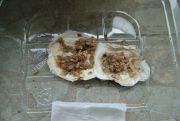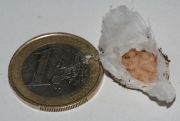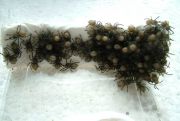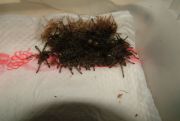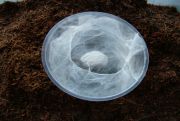Photogallery - 26 species of
tarantulas with egg sacks

Tarantula reproduction
As with other spiders, the mechanics of intercourse are quite different from those of mammals. Once a male spider reaches maturity and becomes motivated to mate, it will weave a web mat on a flat surface. The spider will then rub its abdomen on the surface of this mat and in so doing release a quantity of semen. It may then insert its pedipalps (short leg-like appendages between the chelicerae and front legs) into the pool of semen. The pedipalps absorb the semen and keep it viable until a mate can be found. When a male spider detects the presence of a female, the two exchange signals to establish that they are of the same species. These signals may also lull the female into a receptive state; if so, the male approaches the female and inserts his pedipalps into an opening in the lower surface of her abdomen. After the semen has been transferred to the receptive female's body, the male will generally quickly leave the scene before the female recovers her appetite.Females deposit 50 to 2000 eggs, depending on the species, in a silken egg sac and guard it for 6 to 7 weeks. The young spiderlings remain in the nest for some time after hatching and then disperse by crawling in all directions. Read more..

Copyright © 2002-2025 Ondrej Rehak. All rights reserved.

Visit: tarantulas
| scorpions
| tarantulas
| camel spiders
| scolopendra
Recommended: beetles | entomology | insect | beetle pics | Bolivia
Recommended: beetles | entomology | insect | beetle pics | Bolivia



